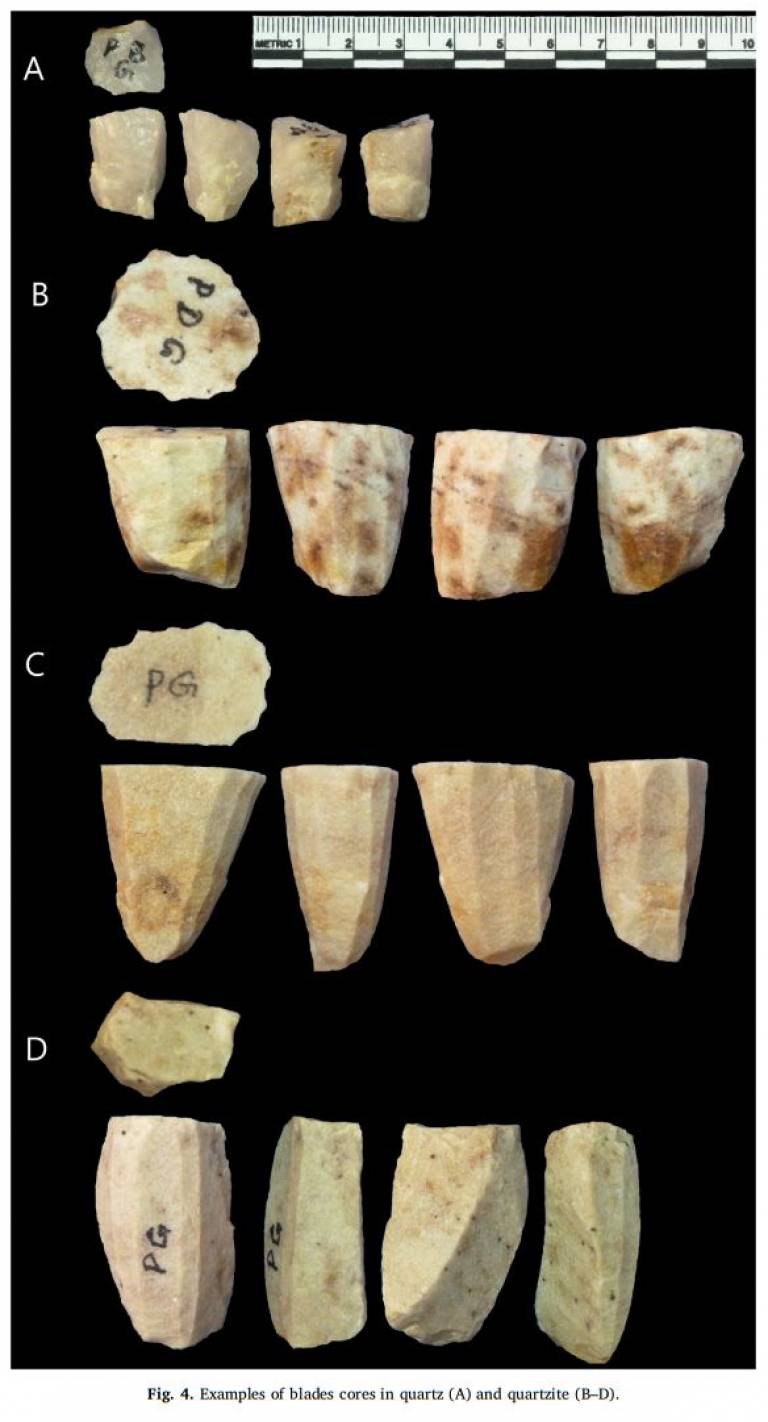Raw material type strongly influenced stone tool technologies in India
8 July 2018
The terminology used to describe Palaeolithic industries has an important impact upon our interpretation of past behaviour.
 In South Asia, the term Late Palaeolithic is employed to refer to Late Pleistocene microlithic industries, distinguishing them chronologically from Holocene Mesolithic industries, and technologically from preceding Middle Palaeolithic technologies. Historically, however, an intermediate technological stage between Middle Palaeolithic and microlithic industries has been recognised and called 'Upper' Palaeolithic. Examining whether these 'Upper' Palaeolithic industries fit contemporary definitions of Middle or Late Palaeolithic technologies, distinct diversity within one of these technologies or a transitional phase between the two is therefore necessary to reintegrate these 'Upper' Palaeolithic sites into current debate. This is a particularly timely issue as the connection between some Late Palaeolithic artefact types, particularly backed microliths, and the earliest modern human populations in South Asia no longer appears tenable, and thus a rush to identify the earliest appearance of microliths must give way to more detailed examinations of behavioural variability. This paper re-examines lithic assemblages from Buddha Pushkar, western India, originally reported as an 'Upper' Palaeolithic industry. An attribute study of metric and categorical variables recorded on stone tools is used to examine how flaking technology, raw material use and reduction intensity vary within and between these assemblages. The results indicate raw material choices had a marked impact on stone tool technologies, nested within a pattern of technological diversity in western India during the terminal Pleistocene that complement models of regional trajectories in the evolution of Late Palaeolithic technologies.
In South Asia, the term Late Palaeolithic is employed to refer to Late Pleistocene microlithic industries, distinguishing them chronologically from Holocene Mesolithic industries, and technologically from preceding Middle Palaeolithic technologies. Historically, however, an intermediate technological stage between Middle Palaeolithic and microlithic industries has been recognised and called 'Upper' Palaeolithic. Examining whether these 'Upper' Palaeolithic industries fit contemporary definitions of Middle or Late Palaeolithic technologies, distinct diversity within one of these technologies or a transitional phase between the two is therefore necessary to reintegrate these 'Upper' Palaeolithic sites into current debate. This is a particularly timely issue as the connection between some Late Palaeolithic artefact types, particularly backed microliths, and the earliest modern human populations in South Asia no longer appears tenable, and thus a rush to identify the earliest appearance of microliths must give way to more detailed examinations of behavioural variability. This paper re-examines lithic assemblages from Buddha Pushkar, western India, originally reported as an 'Upper' Palaeolithic industry. An attribute study of metric and categorical variables recorded on stone tools is used to examine how flaking technology, raw material use and reduction intensity vary within and between these assemblages. The results indicate raw material choices had a marked impact on stone tool technologies, nested within a pattern of technological diversity in western India during the terminal Pleistocene that complement models of regional trajectories in the evolution of Late Palaeolithic technologies.
Buddha Pushkar revisited: Technological variability in Late Palaeolithic stone tools at the Thar Desert margin, India
James Blinkhorn
DOI: 10.1016/j.jasrep.2018.04.020
 Close
Close

